TOP 10 areas in Sicily

- View and ascent of Etna volcano
- Ascent of the Stromboli volcano
- Mud baths on the volcanic island of Vulcano
- Valley of the Temples of Valle dei Templi in Agrigento
- The fairytale town of Cefalù
- The mythical settlement of Erice
- Zingaro Nature Reserve
- Ancient Palermo
- The volcanic island of Pantelleria
- Volcanic island of Ústica
Why sail to Sicily?
Sicily is an island of enigmas, whose natural beauty and cultural richness is unmatched by almost any other island. It is very difficult not to succumb to it. Let's imagine. You arrive early in the morning in the captivating ancient city of Palermo and after the requisite cup of masterfully preparedespresso and a few mouthfuls of fresh, fragrant pastries in the Piazza Marina, you have a few hours to take over the boat. For a while you may succumb to a feeling of travel fatigue, but the beauty of the city will immediately dispel these feelings. Like a stunned man, you stand in the Piazza Quattro Canti, surrounded by four Baroque palaces. Your breath will be taken away as you navigate the colourful streets past the bustling Vucciria market, once the Arabs' exotic charm.

There's so much more to experience, but it's time to set sail. The week ahead will be packed with experiences, stunning natural phenomena and warm greetings from ancient history. West of Palermo, you'll bridge the deep bay of Castellamare, and by evening you'll be taking in some of the most captivating coastal scenery ever, formed by the Zingaro Nature Reserve, which may have been created with the tacit approval of the Mafia. In this incredible landscape you will find 870 species of plants and countless rare birds of prey defending the airspace. Further along the route around Sicily, it is impossible not to visit the mythical settlement of Erice north of Trapani, surely the most impressive in all of Sicily. Now you are faced with a dilemma: Stick to the coast and save a few miles of sailing, or visit the volcanic island of Pantelleria, whose charm has succumbed to Sting or Madonna? The answer is clear, this island will simply draw you in -with its myriad fjords and bays, rugged coastline, breathtaking divingm, snorkelling and a plethora of local farms that will complement your boat's cuisine with premium oil, capers or figs.
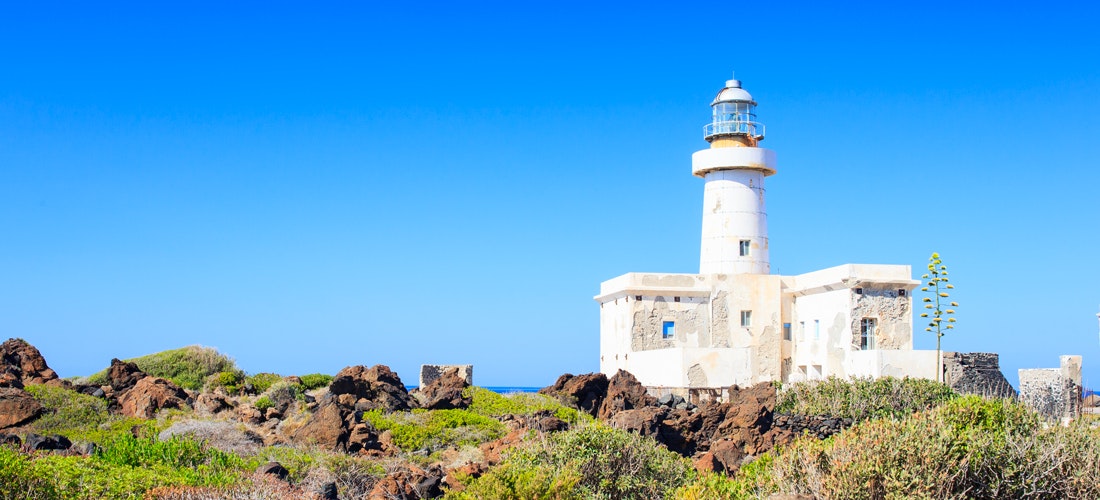
The town pier in Agrigento is another sure stop. Here, take an early morning exploration of perhaps one of the most impressive sites in Europe, the famous Valley of the Temples. As you cruise further up the coast, delight the sailors present with a rejuvenating treatment in the mud bath on the beach by the white cliffs of Cape Bianco. Another city pier that would be a sin to miss is the one at the old city of Syracuse on the islet of Ortygia, which has formed the heart of the city for 2,700 years. It is here that you can stroll through the beautifully lit Piazza del Duomo in the evening, admire the monumental Duomo, or take a sultryrefresh yourself on a hot day at one of the Hellenic world's most famous springs, to which Virgil himself sang odes, the Fonte Aretusa. Your cruise off the east coast of Sicily will be graced by Sicily's largestthe spectral volcano Etna, considered by ancient mariners to be the highest point on Earth. Its peak is often seen snow-capped and smouldering, and it last showed its power in 2001, when its lava flow threatened some local villages during July and August. And your cruise will hardly be complete if you don't honour the peak with a visit.
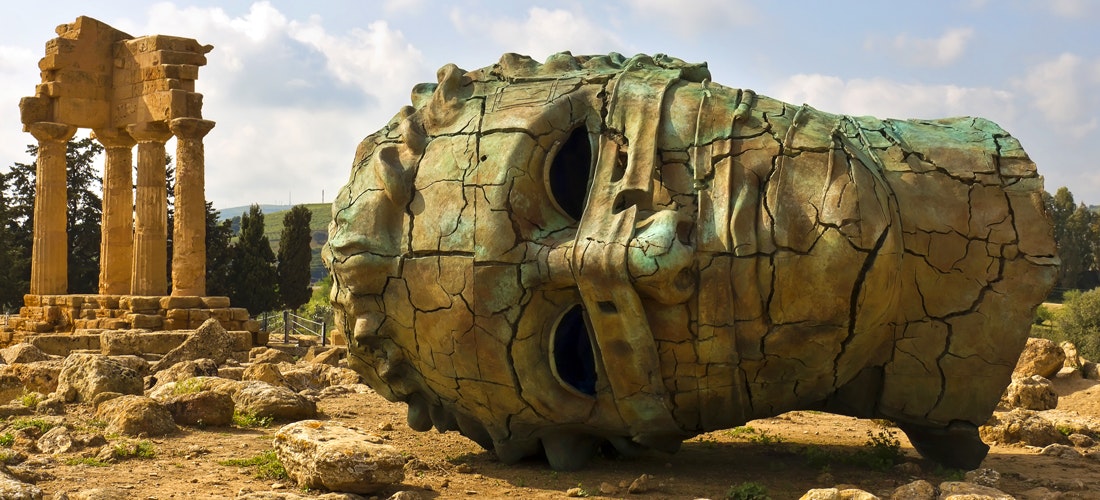
Now you're full of the volcanic atmosphere that Sicily is brimming with, and approaching the Aeolian Islands. There are 7 of them, all volcanic and extremely attractive. Lipari offers the most varied nature of them all, Vulcano, where the fire god Vulcan had his divine forge, will make your cruise pleasant and refreshing. with its muddy pools and fumaroles, and Stromboli, which will absolutely amaze you with its spectacular eruptions four times an hour, which you will enjoy especially at night. On Alicudi you will be surrounded by complete tranquillity and irresistible dive sites, and you start making plans in your head to extend your cruise for another week. This is what your maritime adventure around Sicily and the Aeolian Islands can look like.
Yachting in Sicily
Sicily is a great location for summer sailing, you just need to plan your route carefully. You will find plenty of moorings and a marina for a reasonable fee. Many marinas are currently being converted into modern marinas, which raises the prices, which can be really high in high season. Outside of marinas, prices tend to be decent except where local marinas have obtained their concession and their financial requirements tend to be exorbitant.
Along the northern coast, it's no problem to contract a berth at Castellammare del Golfo, where they charge reasonably. If you enjoy haggling, you can negotiate a berth in Palermo for a really reasonable price. The surrounding area may not be bursting with scenic beauty, but the city centre more than makes up for it. For good money, you can get mooring in Termini Imerese.
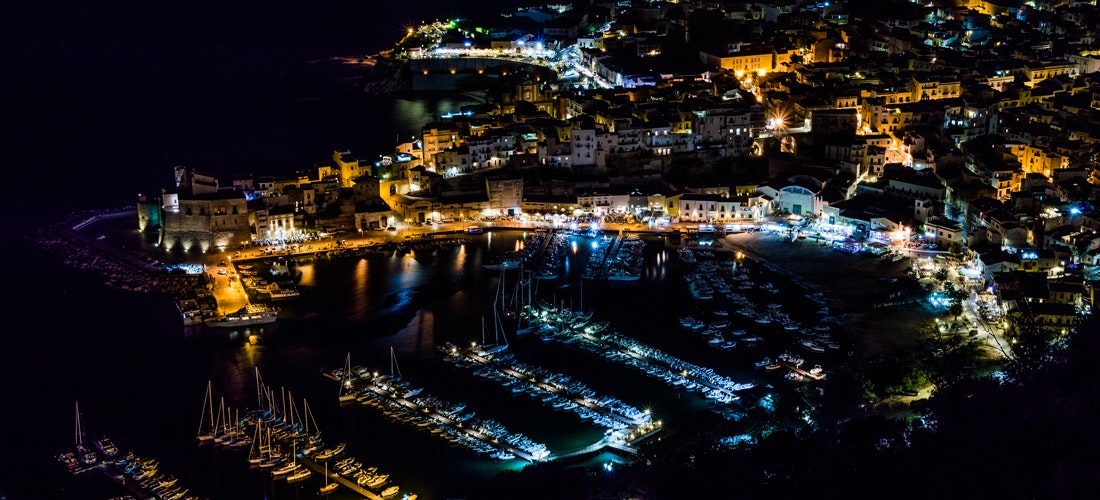
In Sicily, you're heading west or east on your cruise. If you're approaching Sicily from Elba, Sardinia or Corsica, you'd better do it during the day, as the area around Trapani and the Egadi Islands includes many shallows. From west to east, yachts can travel almost at will; in the opposite direction, it is preferable to sail along the northern coast. If Sicily is your stopover for a crossing to Tunisia, you can set sail from Marsala or Mazarra del Vallo, make an even smallerstop at the islet of Pantellería and then take a direct course to Hammamet Bay and one of the local marinas. From the south of Sicily, for example from Licata, it is also possible to reach beautiful Malta without difficulty. From Greek waters, sailors most often set sail from Siracusa and Catania. Remember, however, that the weather within 20 miles of the coast does not necessarily reflect the weather further offshore; distance from the sea breeze can bring windless conditions.
Weather and weather conditions
The weather in Sicily during the summer months varies considerably depending on the side of the island, so let's take a closer look at these areas.
North coast
This side of Sicily is dominated by N - NW winds, which we can safely call mistral. This wind usually starts in the morning, builds up to 3-4 Bf and dies down at night. Sometimes it blows from the SW and, further on, at the Strait of Messina, from the NE. Strong northerly winds bring with them strong swells, especially off Capo San Vito. There is a weak easterly current, but it is easily overpowered by the prevailing winds.
The west coast
Traditionally, the prevailing wind is NW, but sometimes it turns to the west. Along the coast and off the Egadi Islands, you will often encounter currents of about 1 knot, often heading NE. NW winds often cause choppy seas, especially when the winds are light. This condition is more unpleasant than dangerous. Sailing in the local waters is very strange. In one place the sea is rough and a little further inland you will find the surface as smooth as glass.
South Coast
In the south of Sicily, the winds are dominated by a SW sea breeze, usually not exceeding 4 Bf. Often, however, there is no wind at all and no wind at all. Towards the west, the wind increases and the heaving sea caused by southerly winds is more frequent, but this rarely happens in summer.
The east coast
The standard wind here is the sea breeze, which blows from N-S directions. It starts again in the morning and dies down after sunset. It is normally 4 - 5 Bf and often blows continuously overnight. NE winds are frequent and are accompanied by rough seas.
Winter season
Across Sicily there are gales mostly from the NW - W, but occasionally a gregale is heard from the NE. In autumn and spring, the scirocco comes into its own, gaining considerable strength and bringing with it humidity.
You can jump into the warmest sea from the deck around Palermo in August, when the average water temperature is 26.3°C.
Sicilian cities
Palermo
"Michael Corleone stood on the long wooden pier of the Palermo harbour and watched the great ocean liner depart for America...The pier was bustling with dockworkers in caps and work clothes with lots of pockets, transferring goods from ships to trucks." Thus begins the famous novel Sicilian Maria Puzza, set in Sicily in 1950. The long pier may still be found in the harbour, but its commercial busyness brings back memories of the golden days with a tear in its eye. After all, the ancient name of the town, Panormos, literally means "All Port". But more than the cargo port, we're interested in the yachting The Bersagliere pier, from where we can sail around the island, to the volcanic Aeolian Islands, or rest and explore beautiful Palermo.
Port of Cala / Pier Bersagliere
Yachts should head for the Bersagliere Pier. Dock where possible, bow or stern. The outside end of the pier from the gas station is managed by YC Italiano. You can stand here after the pump closes from about 19:00 and you need to leave in the morning before opening. From the fold of the pier to its root are Club Mediterraneo and Nixe Yachting. We recommend Club Salpancore's space for yachts up to 12.5m in length. Shelter from the weather is excellent here, boats often survive the winter. Most berths have electricity, water and Wi-Fi. You can fill up with petrol at the pier. The area around the marina is ideal for shopping for supplies. There are several supermarkets and a large street market next to the train station. You can also eat well in one of the excellent trattorias, pizzerias or restaurants around Cala.
Antica Focacceria San Francesco
Via Alessandro Paternostro, 58, 90133 Palermo, Italy
We've got a great tip for a fantastic and stylish bakery a short walk from the harbour. Marble tables, wooden cabinets from the turn of the 20th century and alloy ovens give this place an incredible character. You can enjoy local pani ca meusa, or veal with cheese and salt, pea fritters or delicious cannoli.
Palermo was ruled by all the great nations of its time. From the Phoenicians, who founded Palermo, to the Romans, who conquered the city in 254 BC, to the Arab Saracens, who gave the city an exotically mysterious air, to the Normans with their monumental architecture. The Norman ruler Frederick, in particular, was very intelligent, kind and capable, and he encouraged the arts and built many outstanding monuments. The Aragonese and Bourbons followed, until the city was liberated by Giuseppe Garibaldi in 1860.
Palermo's centre holds so many gems that we recommend setting aside at least one full day and equipping your ship's library with a comprehensive guide. In this article we outline the essentials that no yachtsman or landlubber should miss. You can't go wrong if you set off bohemian straight into the sunset from Cala Harbour for the evening.
For the Corso Vittorio Emanuele highway will take you to one of the top buildings in all of Sicily, simply called "The Cathedral". It was built by the Normans in the 12th century - look out for the right side aisle, where the sarcophagi of the island's four rulers are preserved. Nearby, visit the Palazzo dei Normani, a Norman cathedral surprisingly built by the Arabs. The Normans enlarged it and later rebuilt it several times. As it is the seat of the Sicilian government and parlement, most of it is only accessible from the outside.
As every sailor should have fear done for him, a visit to the catacombs of the Convento dei Cappuccini can't make any crew uncomfortable. Here the upper class were buried until 1881, often without coffins or by hanging them on the wall in their original clothes. Famous is the exquisitely preserved body of two-year-old Rosalia.
The beautiful Orto Botanico Botanical Garden, one of the most impressive in Europe, is sure to provide a little relief. It is followed by the picturesque urban park of Villa Giulia, which has already delighted Goethe and where the soul of many a sailor will rest. If you have children in your crew, even in the age of smartphones and tablets, they might be interested in Palermo's toy museum, the Museo Internazionale delle Marionette, the largest in Sicily. Their traditional Sicilian puppet operas have a special charm.
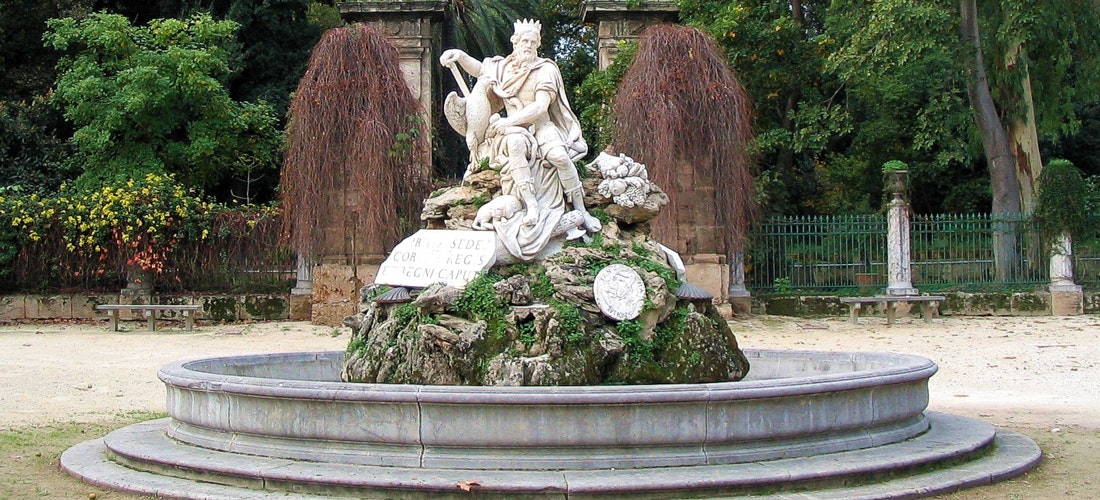
Syracuse
For two centuries, Syracuse was considered the most powerful city in the known world. It was not broken by the Carthaginians, the Etruscans or the Athenians. According to the Greek historian Thucydides, the city was founded by the Corinthians at the urging of the oracle at Delphi. They were attracted by the abundance of freshwater springs, the fertile surrounding countryside and the easily defensible fortress on the islet of Ortygia.
The port of Syracuse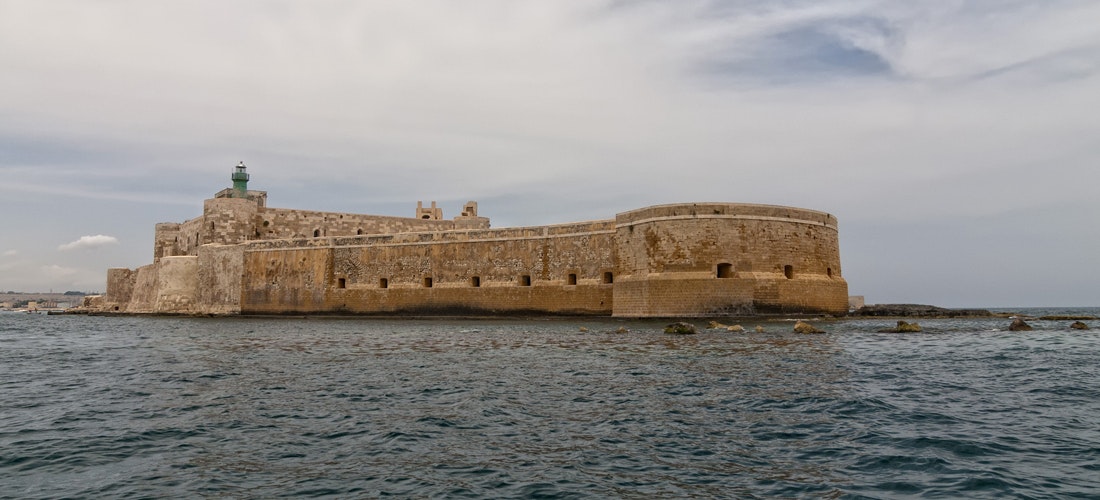
In Syracuse you have 3 options for landing: the Town Pier, Marina Yachting, and Porto Marmoreo.
The Town Pier is now being rebuilt and it is hoped that the berths will be made available soon. The prevailing wind here blows the yachts onto the pier, so it is important to keep well clear of the shore. The wind dies down at night. There is good shelter from the northerly winds.
Marina Yachting is nestled between the pump-out jetty and the channel separating the mainland from the historic islet of Ortygia. Anchor here according to current instructions. In southerly winds it is a good idea to tie up inside the marina or in Porto Marmoreo. In W winds it is safe to overnight on the outside of the breakwater. The marina can accommodate 180 boats up to 40 m in length. There is water, electricity, showers, toilets, laundry and Wi-Fi.
Porto Marmoreo - most of the berths along the promenade on the north side of the old town belong to private clubs, with only a few spaces set aside for visitors. But try the Lakkios pontoon in the NE corner of the harbour. You'll find perfect shelter from all directions throughout the area. The downside is the smell that wafts in, especially on steamy summer days, from the nearby sewer outlet.
Marina di Siracusa is a relatively new project, which was reportedly recently completed. The marina can be found west of the old town and the commercial docks.
Moorings around Syracuse
The northwest mooring can be found off the beach well away from the commercial docks. There is a depth of 3-5 meters with a muddy bottom where the anchor will hold you securely. From here it's close to the dingy on the new town pier and stock shopping. An alternative is to anchor south of the bay. There are also several pontoons in this section suitable for launching smaller vessels. Either way, be careful of your dinghy, there have been reports of theft here in the past.
And now, finally, to the beauty of the town itself. Your first visit should be to the ancient islet of Ortygia. There are so many fascinating buildings in a small area that you won't feel the need to go anywhere else. The city was founded in 734 BC and soon became the largest fortified city in Ancient Greece, with half a million people living here. Its mighty fleet defeated that of Athens and a boom time began under the rulers Dionysus and Dionysus I. It was also here that the famous Archimedes constructed a system of lenses and mirrors with which to light Roman ships in war with Rome. Despite strict orders to keep his genius alive, he was killed by a Roman soldier.

Today's Ortygia is a beautiful tangle of narrows. The Antico Mercato is the former 19th century town market, where you can still find the fish market. But the pearl is the Piazza del Duomo, especially in the evening and at night when it is bathed in illumination. Here the magnificent Temple of Athena, which now forms the base of the Duomo, looms before you. It was spared demolition only because it was converted to Christian use in the 6th century AD. At the Ponte Nuovo bridge, which connects the island to the mainland, you will be treated to the oldest Doric sanctuary in Greece - the Temple of Apollo, dating from 570 BC. We must also mention Arethusa's Fonte Aretusa, a famous mythological site. Now you will find here a romantic place to rest.
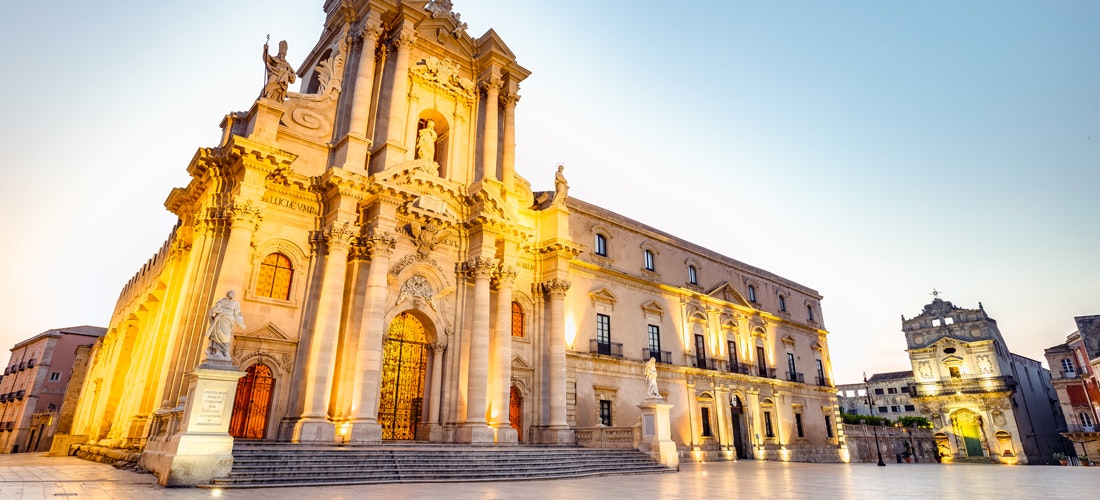
- Sailboat deals°
- Catamaran deals°
- Power Catamaran deals°
Sailboat deals°
Trapani
Trapani is a port city on the westernmost coast of Sicily and the capital of the province of the same name. The town still acts as an important fishing port. The city centre has a baroque appearance with many churches and palaces. Worth mentioning are the Cathedral and the Jesuit church Chiesa del Collegio dei Gesuit. The town is the gateway to the nearby Aegadian Islands, where cruise ships sail. To the north of the town is Lido si San Giuliano, where there isbeautiful swimming on the beautiful beaches in the romantic coves.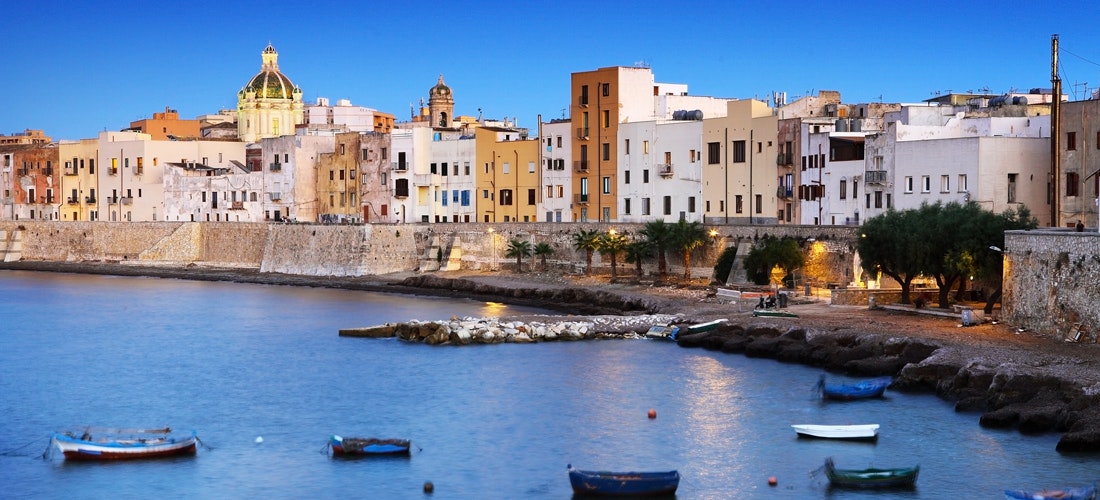
We understand that the west of Sicily is somewhat remote for many sailors, but you should definitely point your sailboat in this direction. The centre and main port of this area is the town of Trapani. The harbour itself is attractive, with its landmarks, the Torre Colombaia tower and the old lighthouse, visible from afar. A turning point for the port came in October 2005, when it hosted the America's Cup fleet, which raced a regatta in the area. This event kick-started a major revitalisation of the harbour, which mainly affected the breakwater pier. Navigating into Trapani harbour will not be difficult. If you are sailing from the north, you can already see the almost 756 m high Mte Guiliano with the mythical settlement of Erice at its peak. The clear top attraction far and wide is the Erice settlement, which rises high on the 756m high mountain outside the town. Erice is shrouded in many myths. The famous Italian author Carlo Levi compared it to Assisi, saying that Erice is "the Assisi of the south, full of churches, monasteries, silent streets and an extraordinary accumulation of mythological memories". For centuries it was home to the cult of the mother of love and fertility - Astarte among the Phoenicians, Aphrodite among the Greeks and Venus among the Romans. Her temple in Erice was worshipped throughout the Western world. It was here that the mythical Daídalos landed and it was here that Virgil famously wrote his poem. Last but not least, the magnificent view of the surrounding sea, the Egadi islands and the Trapani harbour, as well as a pleasant mountain breeze to refresh you after a sultry stay on land. The village can be reached by bus, which has a station in the harbour north behind Trapani Boat Service, or by cable car.

From the south you can see the town houses peeking out from behind the salt flats. As you get closer to the town, you'll notice the red roofs of the local hospital, the waterfront, and the aforementioned Torre Colombaia and the old lighthouse. There is plenty to see in Trapani itself. For example, the pilgrimage site and the Gothic-Catalan church of Santuario dell' Annunziata from the 13th century. full of valuable works of art, and many other very attractive churches, temples and monasteries. To the north of the town is the beach of Lido si San Giuliano, where there islovely swimming on the beautiful beaches in romantic coves in clear water.
The port of Trapani
In the vicinity of the harbour, beware of the shoals which extend for about a mile from the mainland; the entrance should be from the SW direction. Until recently there were free moorings in the NW corner at Lega Navale, and also in the SE corner. Vento di Maestrale and Columbus Yachting offer limited moorings between the yacht club and the Coast Guard. A few spaces are also available at Trapani Boat Service. Rerouting, on the other hand, will take you from the fishing harbor, which is always full. The harbour offers reliable shelter on all sides, only the ferries and hydrofoils cause occasional heaving. Water and electricity are at most moorings, with showers and toilets in the marinas. There is great local shopping for supplies, especially in the eastern part of town.
Trattoria del Porto
This very pleasant trattoria is conveniently located right in the harbor, so you don't have to wander hungry from your boat around town in search of a good dinner. The restaurant offers appealing Arabic cuisine (such as traditional couscous) and moderate prices.
Catania
Catania is the capital of the province of Catania and the second largest city in Sicily. The city of Catania is situated on the eastern coast at the foot of Mount Etna volcano. It issituated on the edge of the bay of the same name on the Ionian coast of Sicily. The history of the town dates back to the 8th century. Catania flourished most during the Roman period. Thereafter, the city's development stagnated until the 15th century. In 1693, Catania was struck by a massive earthquake and volcanic activity from Mount Etna. Subsequently, the city was rebuilt in the Baroque style by the architect G.B. Vaccarini.
The symbol of Catania is the Baroque fountain with the elephant, which is literally surrounded by many monuments, theatres, museums, bars and shops. Every morning there is a market in the centre itself. Catania's location makes it an ideal base for excursions around Sicily. There is also an international airport - Fontanarossa. Interesting sites that are definitely worth visiting are Siracusa, Piazza Amerina, Etna, Agrigento and picturesque towns that will amaze you with their atmosphere.
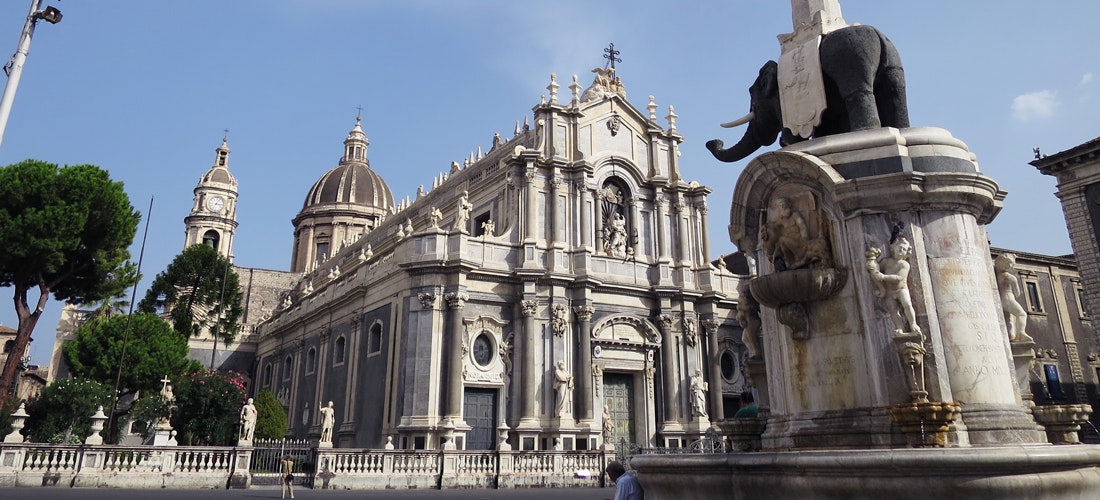
Messina
Messina is the third largest city in Sicily and the capital of the province of Messina. The province of Messsina is mainly mountainous except for the areas around the watercourses. It is surrounded by the Tyrrhenian Sea to the north, the Strait of Messina to the east and the Ionian Sea to the south-east.
Messina is dominated by the Piazza Duomo and the Cimitero Monumentale, a pantheon decorated with Ionic columns. From here there is a fine view of the Strait of Messina. Youwill also be impressed by the beautiful Fountain Di Orione and the Church of Santissima Annunziata dei Catalani with its three portals and the statue of the Spanish Don Juan de Austria, who defeated the Turks at the Battle of Lepanto.
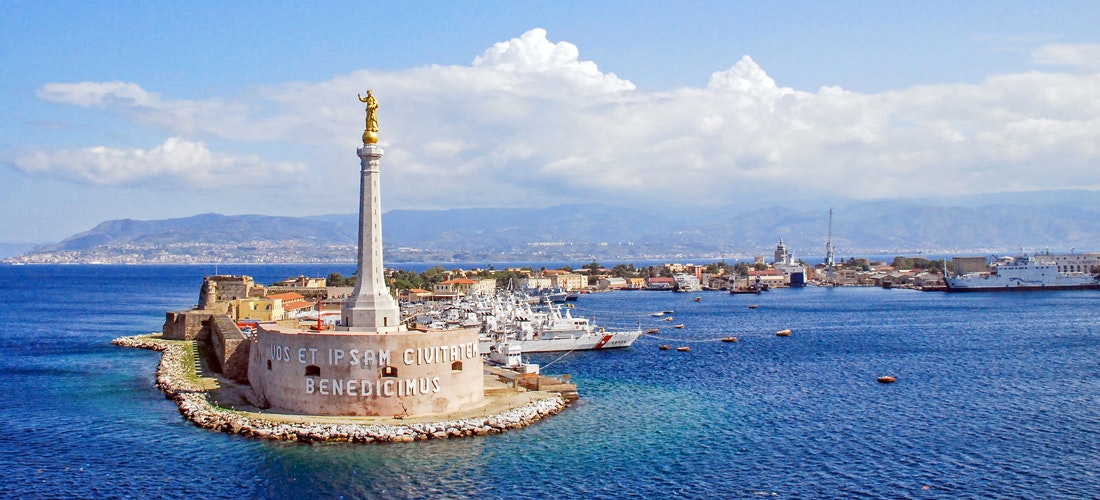
Milazzo
Milazzo is located in the province of Messina on the northern coast of Sicily. The shape of this town is very special because it is located between the two bays of Milazzo to the east and Patti to the west. Milazzo is today one of the most popular tourist destinations in Sicily, from which you can easily reach, for example, the Aeolian Islands.
One of the most beautiful places to visit in Milazzo is undoubtedly the castle and the old cathedral. The castle covers an area of 7 hectares and is the most important monument of the town. The castle overlooks the town of Milazzo and offers one of the best views in the region, from where you can see all the way to the Aeolian Islands.
Another interesting monument is the cathedral dating from 1608. The important port of Milazzo, built in 1843, is worth mentioning. Over the years, the port has gained a more dominant position in the Tyrrhenian Sea. Today, it is the main port for embarkation to the Aeolian Islands, but it also provides good connections to Naples and the island of Ustica.
Needless to say, the sea in this area is spectacular and clear. On the west coast you will find beautiful beaches that attract tourists from all over the world. In the town of Milazzothere are plenty of small and inexpensive restaurants thatoffer a real taste of Sicilian cuisine at very affordable prices.
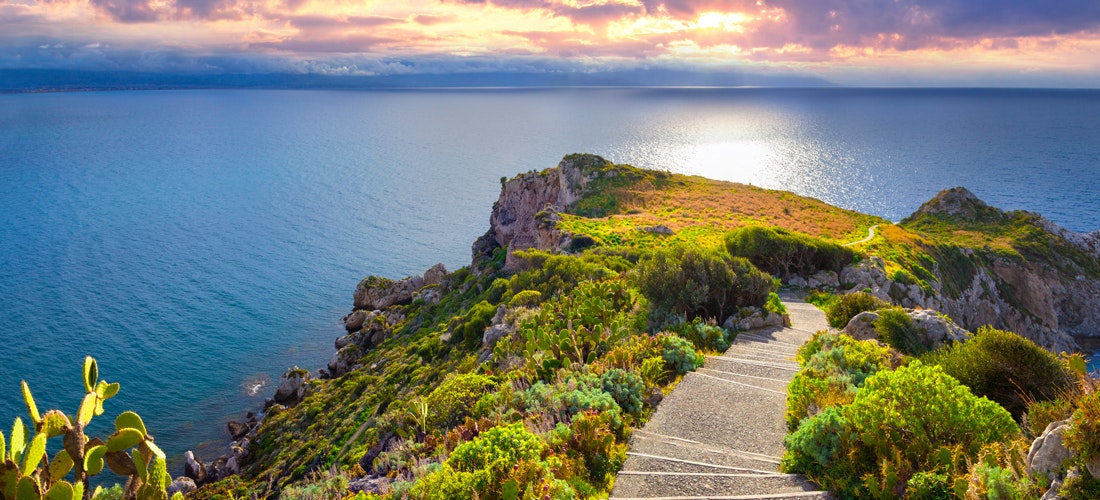
Aeolian Islands
Lipary
Stromboli, Panarea, Filicudi, Alicudi, Salina, Lipari and Vulcano make up the seven islands of the Aeolian Islands, also known as the Aeolian Islands. Together they form a kind of starfish, which resembles the inverted emblem of the Mercedes car company. Located just 35 miles off the Sicilian coast, they are one of the main attractions of the area, along with Etna. All the islands are the peaks of submarine volcanoes, and the 2 craters that still receive the most attention are Stromboli and Gran Cratere on Vulcan.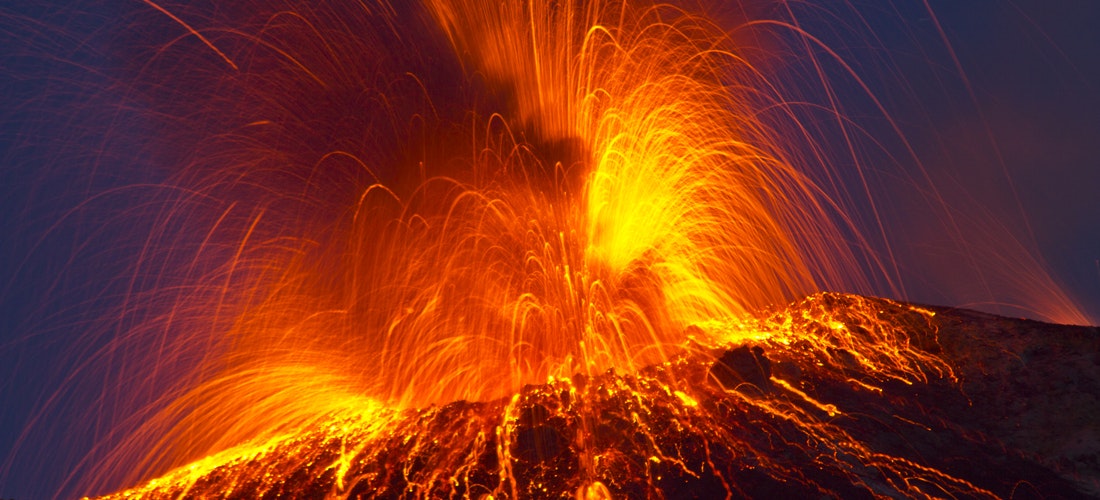
The Aeolian Islands have always been prey to pirates and then colonizers, from the Carthaginians to the Spanish. Many valuable exhibits from all periods can be found in the Aiolian Museum of the Aeolian Islands. And why are the islands called the Aiolian islands, and why is the Aiolian Museum here? Aiolos was the ruler of the winds who lived on an island in Aioli. He welcomed Odysseus and his party and gave him a bellows full of adverse winds for the journey, so that the ships were powered only by the gentle Zephyros at Aiolos' command. However, just outside Ithaca, Odysseus' home, the members of the party opened the bellows, believing it to contain treasure, and the adverse winds drove the entire party back to Aiolus. The latter, however, thought that Odysseus had lost the favour of the gods and no longer accepted the company. However, there is also an opinion that the god Aiolus resides on the islet of Ustica north of Palermo.
Council of Lipari Marina Lunga
The commercial quay and a short pier are located just outside the town north of Punta Scaliddi. They are moored on pontoons wherever you are directed. Anchoring at the ferry terminal and commercial pier is now prohibited. The harbour is prone to gales from all directions, especially from the south, and there is also frequent heaving water from passing ferries, so make sure you balance well aft of the pontoons. There is good water and electricity, good food shops and an ATM.
Pignataro
North of town is another marina with water, electricity and relatively new moorings. It is only uncomfortable here in strong southerly winds, otherwise it is the safest anchorage on the Liaprei. The windjammer is reserved for local boats and ferries. You can walk into town, take a bus that stops at the base of the windjammer, or take a taxi. Plus, this place somehow feels more realistic than posh Lipari. Also, a van with fresh fruit and pastries stops here.
The fishing village of Canneto, north of Lipari, is very picturesque. A little further north, the magical white sandy beach of Spiaggia Bianca stretches along the road for several kilometres to the pebble beach at Porticello. You can either anchor in Lipari or Pignataro and walk here, or anchor slightly north of Canneta, as anchoring directly off the village is forbidden. You can also anchor directly in Porticello.
If impressive panoramic views tempt you, take a three-kilometre hike from Lipari to Quatroocchi, where you'll get incredible views of Vulcano and the surrounding cliffs. Further along the road you'll reach Pianoconte, a renowned haven for several great pizzerias. After you've had a good meal here, take a walk to the ancient Roman thermal baths at San Calogero, which are reached by a road that slopes down just outside the village. This runs through the valley past jagged rocks and is truly picturesque.
Interesting anchorages
Directly south of Lipari you can anchor in 10 to 20 metres off Vinci beach. The place is open to the west and south. In Valle Muria, you should be careful of the reef at the southern end of the bay. In the northern part, anchor in 5 - 10 m. In the west of the island hides Cala del Fico with a depth of 10 - 15 meters and a dangerous reef in the middle. On the NW tip of the island is Punta Castagna, a secluded beach with a romantic beach and a depth of 6 - 10 m. The place is of course unsuitable in northerly winds.
Vulcano
The southernmost outcrop of the archipelago, lying closest to the Sicilian coast, is Vulcano, the third largest island of the archipelago. The rocky coastline and the massive cone of the volcano are the first things most travellers see when they arrive. The ubiquitous volcanic gases leave the visitor in no doubt that the volcano is still alive. To the Greeks, the island was known as "Hiera Hephaistou", or the Sanctuary of Hephaestus; the Romans later gave it the name Vulcania after the Roman counterpart of the god Hephaestus, Vulcan. This is also the origin of the term for volcano in most Western languages: volcano.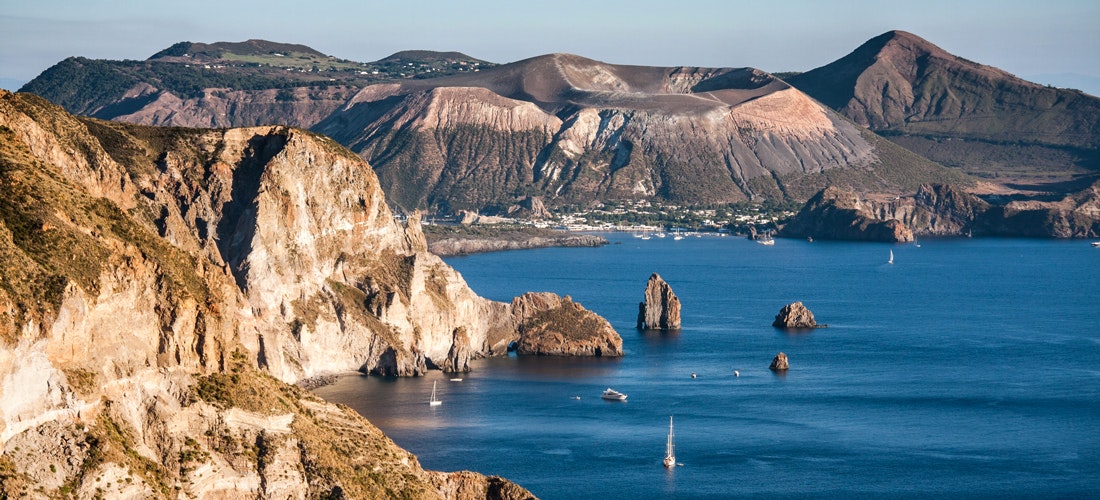
The imaginary gateway to the island, and indeed to the whole archipelago, is the port of Porto di Levante on the north coast. To the south of the town lies Gran Cratere, the Great Crater, a 391m high cone of active volcano from which clouds of sulphurous gases still billow. The central part of the island is the plateau of Vulcano Piano, flanked by a ring of high cliffs. The highest of these is the 500 m high Monte Aria, the highest peak of the island.
Below the steep slopes of the southern coast is the former fishing village of Gelso. To the north of Porto di Levante, the 123 m high rounded peninsula of Vulcanello juts out towards the other islands. The town of Porto di Levante, dominated by two bizarre, brightly coloured cliffs, is where most of the native and tourist life is concentrated. There are two of the island's largest beaches, shops, pizzerias, restaurants, bike and motorbike hire, everything that goes with a holiday. It is also possible to take boat trips around the island from here, visiting the Grotta del Cavallo (Horse Cave) and swimming directly from the boat at the otherwise inaccessible beaches.
In close proximity to Porto di Levante is a major attraction - the natural, constantbubbling sulphur lake, which has very beneficial health effects. Volcanic gases rise from the seabed and the adjacent beach, making bathing an unforgettable experience.
Porto di Levante harbour
There are 100 berths, most yachts moor on the pontoons in Baia Levante just south of the ferry pier, where there is also Wi-fi, showers and toilets. In the area you will find an ATM, supermarket, cafes and restaurants. North of the marina is Marina di Vulcanello with moorings for visitors.
Porto di Levante is an ideal starting point for a hike up the main crater of the Gran Cratere volcano, where the last eruption occurred in 1890. The hike takes about 2 hours. A shorter route leads north to the lower crater of Vulcanello, which only emerged from the sea in 183 BC. An even shorter trip leads from the port north along the mainland neck, where a fantastic beach with rare black sand stretches out. In addition, you'll pass muddy pools and hot springs that bubble up to warm the sea on the way. If you're going to swim in the pools, you'd better take off any jewellery that might be corroded, and expect to be unable to get the strong smell out for a few days. But you will be very healthy.
Porto di Ponente anchorage
This impressive and well-protected anchorage is located directly on the opposite side of the island from Porto di Levante. Here you can anchor your boat right under the cone of the volcano, which will occasionally let you know it is still alive with its smoke. You anchor here in 5-10 metres of coarse sand and the anchor holds solidly, with a little patience. There are buoys in the south of the bay, a supermarket on the shore, a couple of bars and restaurants and fruit and vegetable stalls. The bay is only open to westerly winds.
Gelso Bay
It is anchored off the beach and the small village of Gelso in 3 to 10 metres on coarse sand. The depth drops off quickly, so you need to be patient. There is a good fish restaurant on the shore. There is also a short pier with a depth of 5 - 6 meters. To the northeast is the bay of Cannitello with a beach bar.
Restaurants on the island
The restaurants on the island are expensive, very expensive, so you have to be choosy. For good money in Porto di Levante you can eat at Da Maurizio, which has a nice shady garden, good food and bargain tourist menus. Near the mud baths you'll find a place called Il Palmento with cheap pizza. Those with a bigger budget and who like an impressive atmosphere will find their place in Porto di Ponente. The Baia di Ponente restaurant serves its delicious dishes on a terrace elegantly lit by candles.
Stromboli
The island of Stromboli, formed by the regular cone of the volcano of the same name, is undoubtedly the most active volcano in Europe, and is also among the world's volcanic elite. It is one of the few volcanoes that erupts regularly at intervals of 10-20 minutes. And this has been the case throughout the thousands of years of human presence on the islands. The highest point of the island is Vancori Peak (924 m above sea level). However, the volcanic activity does not take place on this peak, but almost 200 metres below, in the craters on the north-western slope, above the Sciara del Fuoco.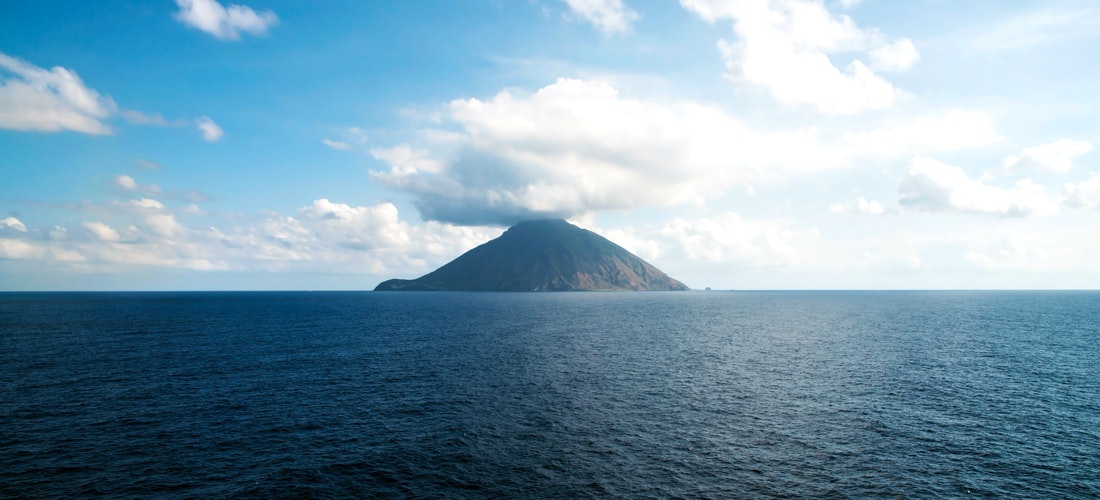
Since ancient times, the island has been known as a natural lighthouse, marking the northeastern edge of the archipelago. In the time of the ancient Greeks, the island was also named after its conical shape (strombos). The island has never been a place of significant settlement. This may have been partly due to the lack of a more favourable plain suitable for its construction, and the occasional large volcanic eruptions certainly did not contribute to the island's popularity. And the natural fear of the presence of unknown forces certainly played a part. Today's villages lie along the coast, Stromboli in the north-east of the island, and the settlement of Ginostra in the south-west.
The traditional livelihood of the local inhabitants was fishing, supplemented by the cultivation of wine (especially the famous Malvasia variety) and some other crops. Today, however, only a few individuals fish, and more and more people are making a living by offering their services to tourists. Nevertheless, Stromboli retains its original character: the narrow streets are inaccessible to cars and the whitewashed character of the houses is not disturbed by any modern buildings.
Beware! As of 2 September 2019, a new regulation is in force which prohibits coming closer than 2 Nm to the island of Stromboli under the threat of heavy fines.
Salina
Salina is located about 4 km northwest of the island of Lipari. The island has a characteristic silhouette - two cones of extinct volcanoes Monte di Porri (860 m) and Monte Fosa delle Felci (962 m) separated by the valley of Valdi Chiesa. That is why the island was called Didyme in ancient times - twins. It is the second largest island of the archipelago and the only one that does not properly fall under Lipari, but is made up of three self-governing parishes. The island is very fertile, thanks to its mineral-rich volcanic ash and abundant water resources. There is abundant wild vegetation and capers, wine, olives and other crops thrive here.
Although there is no ring road on the island, all the villages (S. Marina Salina on the east coast, Malfa on the north, Rinella on the south and Pollara on the west) can be reached by road. The many downhill and uphill stretches make the island attractive to physically fit cyclists, while others can use the well-functioning bus network.
The port of Santa Marina Salina
The island's main harbour can be found in the middle of the east coast. It can accommodate 130 boats at a depth of 1 - 6 m. Yachts are directed to the south pool, those over 10m long moor on the inside of the windward side. Smaller yachts anchor on the west side of the pool, and the really big ones can anchor longitudinally. Both pools offer very good shelter from wind and waves, the south pool being slightly safer from all directions except south. The south pier offers electricity, water, wi-fi, showers and toilets. You can refuel at the north marina.
Panarea
Panarea belongs to a small island group, which lies northeast of the island of Lipari. It was probably formed by a volcanic eruption in 126 BC. With the surrounding islets, it probably once formed a single large island. In earlier times Panarea was known as Euonymos. The island has numerous volcanic phenomena - fumaroles.
The three picturesque villages of Ditella, San Pietro and Dranto lie on the E coast of the island. On its S tip, on the jagged promontory of Punta Milazzesse, the foundations of 23 Bronze Age houses dating from the 14th century BC were uncovered in 1948. About 4 km northeast of Panarea is the small rocky islet of Basiluzzo, where capers are grown. The other members of the island group are Dattilo and Lisca Bianca and several other rocks. The exceptionally clear water and diverse marine fauna are attractive to divers.
The port of San Pietro
Anchored north of the pier of the capital San Pietro in a depth of 2 - 12 metres, the bottom is sandy and the anchor holds well. Unfortunately the pier is occupied by ferries, hydrofoils and fishing boats.
Here in San Pietro you can also admire the sumptuous villas built by the elite of the region. A half-hour walk south of the harbour takes you to a very nice beach, the only sandy one on the island. At the southern tip of the island, near Punta Milazzese, a unique Bronze Age settlement of 23 dwellings was discovered in 1948. The village was probably inhabited from the 14th century BC and bears striking signs of Minoan culture. The artefacts found can be found in the museum at Lipari. If you come to the island in the cooler weather, don't miss the thermal springs right in San Pietro. In the north of the island, near the Village of Calcara, a mysterious steam rises from the beach and the sea. A merchant ship from around 400 BC has recently been found off the island. However, underwater work is very difficult, mainly due to the volcanic nature of the island. However, some very unique pieces of pottery have already been recovered, such as black-glazed pottery. The site is guarded by carabinieri and recreational vessels are banned from approaching.
Alicudi
Alicudi is the westernmost island of the archipelago. It is shaped like a small cone, the highest peak with the romantic name of Filo dell' Arpa (Harp String) reaches 675 m. The island was originally called Ericusa, after the heather that grows on its slopes. The western side is incredibly steep and bare, while the eastern side is lined with houses whose inhabitants live off the production of olives, capers and fishing. The ancient settlement of the island is evidenced by vases and objects from excavations dating back to the 4th century BC that have been found here. A climb to the top of the Filo dell Arpa, as well as a trip to the Scoglio della Gallera rock wall in the west, are recommended as excursions.
Filicudi
The island of Filicudi consists of three extinct craters located about 20 km west of Salina. It resembles a large cone, the highest peak of which is Fossa Felci (774 m above sea level). The inhabitants live in the two small harbour villages of Filicudi Porto and Pecorini a Mare, as well as in Valle Chiesa around St Stefani. In addition to fishing, farming is practised on terraced fields. The rugged coastline with its bizarre cliffs and small caves is interesting.
The rich finds and excavations at Capo Graziano, on the south-eastern tip of the island, prove that the island was inhabited as early as the Bronze Age. As well as climbing Fossa Felci, a boat trip around the island is recommended, together with a visit to the Grotta del Bue Marino cave in the west of the island. The Scoglio della Fortuna rock outcropping and the prehistoric settlement of Capo Graziano are remarkable.
Porto Filicudi
On the east of the island there is a small pier, but it is forbidden to recreational yachts. In good weather, anchor in the bay, leaving plenty of space around the pier for ferries. Be wary of the old coastal causeway, which runs southeast of the pier parallel to the beach and is difficult to see. The bottom is rocky and grassy and the anchor does not hold well everywhere. There are 20 buoys installed in the bay. There is a restaurant and a small shop on the shore.
Boats in Italy on offer:
- Sailboat deals°
- Catamaran deals°
- Power Catamaran deals°
Sailboat deals°
Transport to Sicily
By air
Take advantage of the direct flight connection from Prague to Sicily Catania Airport. Tickets to Catania start from CZK 1,000. It always depends on the current airline offer. You can find a range of direct booking tickets at www.smartwings.com. Sicily has airports in Catania and Palermo.
By car
The distance from the Czech Republic to the outskirts of Sicily is less than 1800 km. The journey takes just over 20 hours.
From Prague, the best route is via Rozvadov, through Germany past Munich, then through Innsbruck, Austria and over the Brenner Pass to Villa San Giovanni, Italy, where you will board a ferry that will take you to Sicily's port town of Messinna. The boat from Villa San Giovanni to Messina costs approximately €40